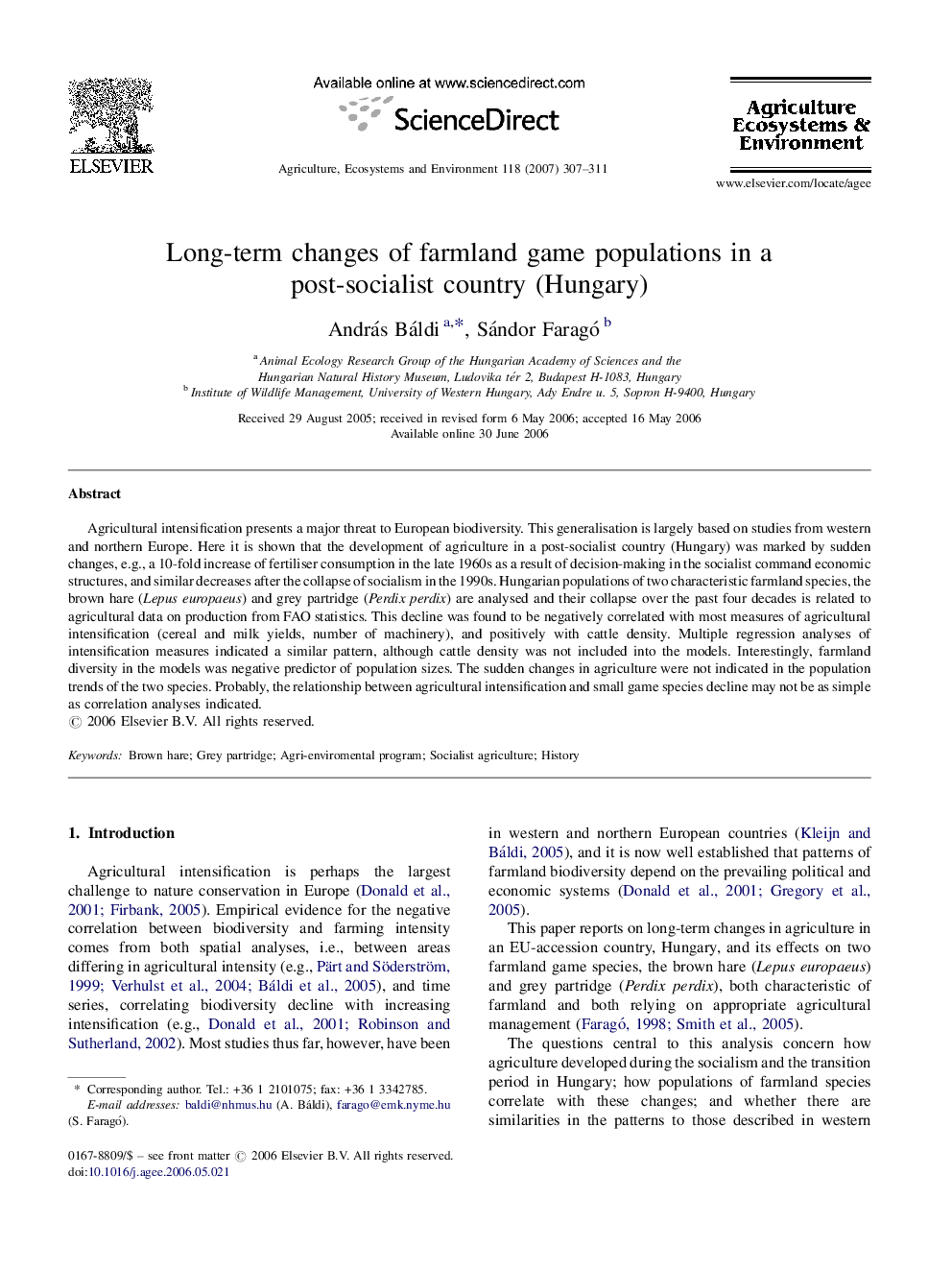| کد مقاله | کد نشریه | سال انتشار | مقاله انگلیسی | نسخه تمام متن |
|---|---|---|---|---|
| 2415816 | 1552144 | 2007 | 5 صفحه PDF | دانلود رایگان |

Agricultural intensification presents a major threat to European biodiversity. This generalisation is largely based on studies from western and northern Europe. Here it is shown that the development of agriculture in a post-socialist country (Hungary) was marked by sudden changes, e.g., a 10-fold increase of fertiliser consumption in the late 1960s as a result of decision-making in the socialist command economic structures, and similar decreases after the collapse of socialism in the 1990s. Hungarian populations of two characteristic farmland species, the brown hare (Lepus europaeus) and grey partridge (Perdix perdix) are analysed and their collapse over the past four decades is related to agricultural data on production from FAO statistics. This decline was found to be negatively correlated with most measures of agricultural intensification (cereal and milk yields, number of machinery), and positively with cattle density. Multiple regression analyses of intensification measures indicated a similar pattern, although cattle density was not included into the models. Interestingly, farmland diversity in the models was negative predictor of population sizes. The sudden changes in agriculture were not indicated in the population trends of the two species. Probably, the relationship between agricultural intensification and small game species decline may not be as simple as correlation analyses indicated.
Journal: Agriculture, Ecosystems & Environment - Volume 118, Issues 1–4, January 2007, Pages 307–311